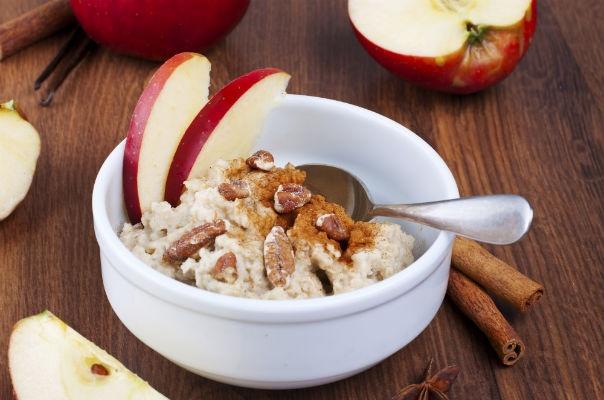In a world where culinary indulgence often takes center stage, the art of crafting a meal plan that aligns with both taste and wellness goals can seem elusive. Enter the low-carb meal plan—a harmonious blend of mindful choices and flavorful experiences designed to support weight loss without sacrificing the joy of eating. This guide invites you on a journey to explore the essentials of designing a low-carb meal plan, one that transforms your kitchen into a canvas of creativity and health. Whether you’re a seasoned chef or a curious beginner, discover how to balance nutrients, embrace variety, and maintain a sustainable lifestyle, all while savoring every bite. Join us as we delve into the principles and practices that make low-carb eating a satisfying path to achieving your wellness aspirations.
Crafting Balanced Nutrient Profiles for Optimal Health
Designing a low-carb meal plan for weight loss requires a thoughtful approach to ensure you’re getting all the necessary nutrients while keeping your carbohydrate intake in check. A successful plan often revolves around prioritizing high-quality proteins, healthy fats, and a wide array of non-starchy vegetables. These elements not only support weight loss but also contribute to sustained energy levels and overall well-being.
- Proteins: Opt for lean meats like chicken, turkey, or fish. For plant-based options, consider tofu, tempeh, or legumes.
- Healthy Fats: Incorporate sources like avocados, nuts, seeds, and olive oil to keep you satiated.
- Vegetables: Fill your plate with leafy greens, broccoli, zucchini, and bell peppers to provide fiber and essential vitamins.
Hydration is equally important; drinking plenty of water throughout the day can help regulate appetite and support metabolic processes. By focusing on these components, you can create a balanced, nutrient-dense meal plan that aligns with your weight loss goals while ensuring optimal health.

Strategic Ingredient Selection for Low-Carb Success
Choosing the right ingredients is crucial when crafting a low-carb meal plan that supports weight loss. Focus on incorporating foods that are both nutritious and satisfying. Leafy greens such as spinach and kale are excellent choices due to their low carbohydrate content and high levels of vitamins and minerals. Cruciferous vegetables like broccoli and cauliflower provide fiber and antioxidants while keeping carbs low. For protein sources, consider lean meats like chicken and turkey, as well as fatty fish such as salmon and mackerel, which are rich in omega-3 fatty acids.
- Nuts and Seeds: Almonds, chia seeds, and flaxseeds offer healthy fats and protein.
- Dairy Alternatives: Opt for unsweetened almond milk or coconut milk.
- Healthy Fats: Avocados and olive oil are great for adding flavor and satiety.
Incorporate a variety of these ingredients to keep meals interesting and nutritionally balanced. Remember, the key is to enjoy a diverse range of foods that align with your dietary goals while keeping carbohydrate intake in check.

Building Satisfying and Flavorful Low-Carb Meals
Crafting meals that are both satisfying and flavorful while adhering to a low-carb diet requires a bit of culinary creativity and an understanding of your taste preferences. Experiment with different textures and flavors to keep your meals exciting and enjoyable. Start by focusing on nutrient-dense, low-carb vegetables such as spinach, kale, and zucchini, which can be the foundation of many delicious dishes. Incorporate proteins like grilled chicken, tofu, or seared salmon to add depth and substance to your meals. Don’t forget to use healthy fats like avocado, nuts, and olive oil to enhance flavor and satiety.
- Spice it Up: Use herbs and spices such as garlic, rosemary, and turmeric to bring life to your dishes without adding carbs.
- Get Saucy: Create low-carb sauces using ingredients like mustard, vinegar, and cream to add moisture and flavor.
- Explore Substitutes: Use cauliflower rice or zucchini noodles as alternatives to traditional carb-heavy sides.
- Balance is Key: Ensure each meal includes a good balance of proteins, fats, and fibers to keep you full and energized.
By combining these elements thoughtfully, you can create meals that are not only low in carbohydrates but also bursting with flavor and satisfaction. Remember, the key to sticking with any meal plan is variety and enjoyment, so don’t be afraid to try new recipes and adjust them to fit your palate.

Incorporating Variety and Flexibility in Your Meal Plan
When designing a low-carb meal plan for weight loss, embracing diversity and adaptability is crucial. A monotonous diet can quickly lead to boredom and cravings, so it’s essential to explore a range of ingredients and cooking styles. Incorporate a variety of protein sources such as chicken, fish, tofu, and eggs to keep your meals interesting. Include an array of colorful vegetables like spinach, bell peppers, and zucchini to ensure you’re getting a broad spectrum of nutrients while keeping your carb intake in check.
Flexibility is your ally in maintaining a sustainable low-carb lifestyle. Instead of sticking rigidly to specific recipes, allow yourself the freedom to mix and match ingredients based on what you have available or what’s in season. Consider the following tips to enhance flexibility in your meal planning:
- Prep a few staple items like grilled chicken or roasted veggies that can be used in multiple dishes throughout the week.
- Experiment with different herbs and spices to transform the same base ingredients into entirely new culinary experiences.
- Utilize low-carb swaps like zucchini noodles or cauliflower rice to keep classic dishes exciting and compliant with your dietary goals.
